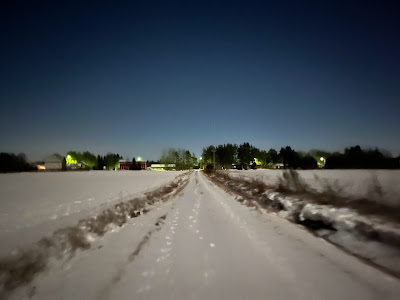A moon halo is this enchanting optical phenomenon caused by the refraction and reflection of light, mostly through ice crystals in thin, cirrus or cirrostratus clouds high in the atmosphere. It results in a ring of light around the moon that looks almost supernatural. It’s pretty special when you catch one! You get to see a glimpse of how light and ice play together in our atmosphere.
To see a moon halo, you need three main ingredients: a bright moon (usually a full moon), clear skies, and those high, thin cirrus or cirrostratus clouds with ice crystals way up in the atmosphere. When the light of the moon hits those ice crystals, it bends and creates that mystical ring. It's like nature’s own little light show!
It is quite fascinating now days to photograph night skies with your cellular phone. I mean it was almost pitch dark, but pointing phone on the sky and press the shutter button and 3 seconds later you get this.
My other blogs:
Roadscape Photography
Chevrolet El Camino 1970
Life @ Köyliö, mostly Finnish






